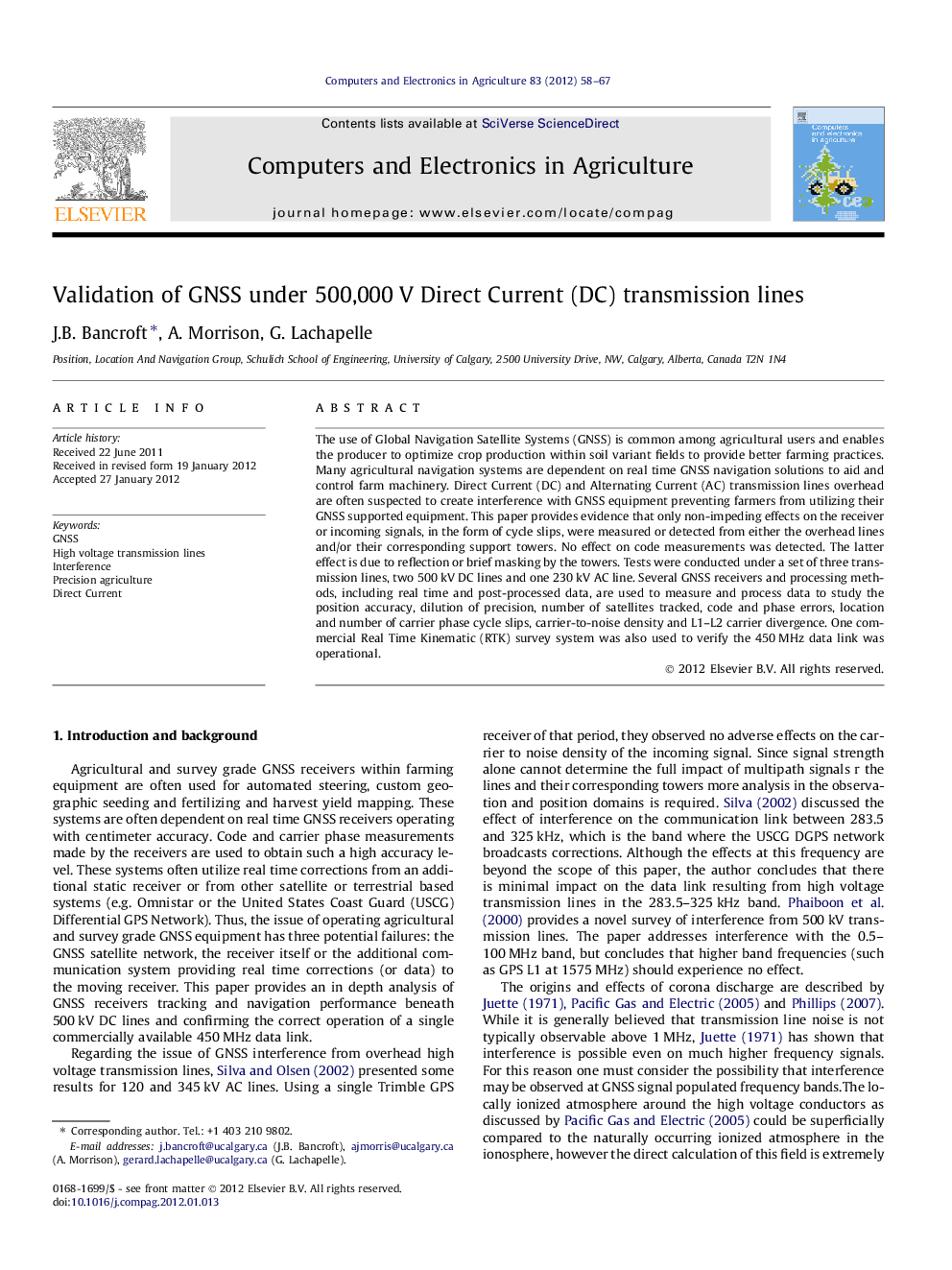| Article ID | Journal | Published Year | Pages | File Type |
|---|---|---|---|---|
| 84497 | Computers and Electronics in Agriculture | 2012 | 10 Pages |
The use of Global Navigation Satellite Systems (GNSS) is common among agricultural users and enables the producer to optimize crop production within soil variant fields to provide better farming practices. Many agricultural navigation systems are dependent on real time GNSS navigation solutions to aid and control farm machinery. Direct Current (DC) and Alternating Current (AC) transmission lines overhead are often suspected to create interference with GNSS equipment preventing farmers from utilizing their GNSS supported equipment. This paper provides evidence that only non-impeding effects on the receiver or incoming signals, in the form of cycle slips, were measured or detected from either the overhead lines and/or their corresponding support towers. No effect on code measurements was detected. The latter effect is due to reflection or brief masking by the towers. Tests were conducted under a set of three transmission lines, two 500 kV DC lines and one 230 kV AC line. Several GNSS receivers and processing methods, including real time and post-processed data, are used to measure and process data to study the position accuracy, dilution of precision, number of satellites tracked, code and phase errors, location and number of carrier phase cycle slips, carrier-to-noise density and L1–L2 carrier divergence. One commercial Real Time Kinematic (RTK) survey system was also used to verify the 450 MHz data link was operational.
► Transmission lines are often suspected to interfere with agriculture GNSS equipment. ► Commercial GNSS receivers and a front-end system collected measurements. ► The vehicle moved at low speeds to simulate agricultural machinery (10–20 km/h). ► Only non-impeding effects were observed due to the transmission lines and towers.
